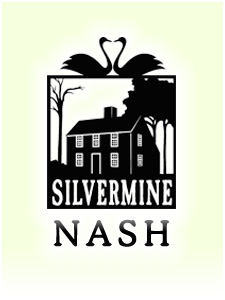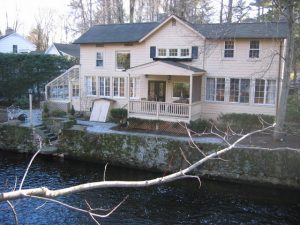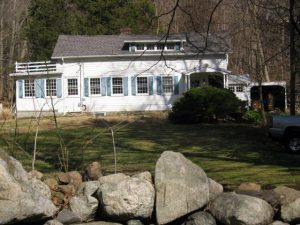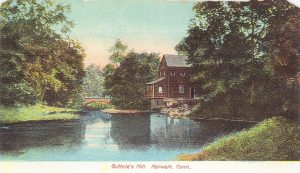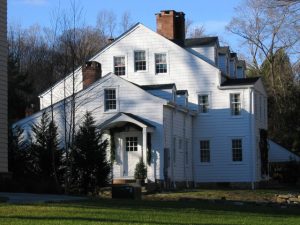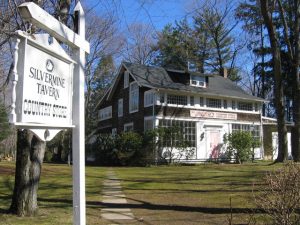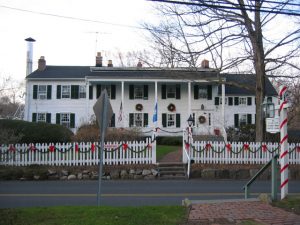Besides Solon Borglum and the Silvermine Group of Artists, two other transplants to Silvermine were important to its transformation from faded mill town to arts colony. Frank Townsend Hutchens, one of the founding members of the Silvermine Group of Artists, studied with Irving R Wiles and Frank DuMond at the Art Students League and was well known for his landscape and portrait paintings. In 1911, he purchased a number of buildings, including “The Old Mill House”, “The Guthrie-Hutchens Barn”, “The Blacksmith/Basket Shop” (Photo #1), the White Mill and original “Village Room” (Photo #2), and “The Red Mill” or Guthrie Knob Mill (Photo #3). The purchase and rehabilitation of these buildings, all near or clustered by the Perry Avenue Bridge, were critical to retaining the rural ambience of Silvermine.
While Hutchens preserved these five critical buildings, John Kenneth Byard played a larger role. Byard, who was the husband of the artist Dorothy Randolph Byard, purchased 83 (later expanded to over 100) acres in Norwalk, New Caanan and Wilton. He also purchased the original barn for the Silvermine Guild of Artists and was instrumental in selling and financing other properties in Silvermine. As one of the major antique dealers and expert on Colonial-era furniture in the United States, and a consultant to historic museums and property owners, including Old Deerfield Villlage in Deerfield, Massachusetts, Byard recognized the importance of the collection of buildings at the center of Silvermine. These included what is now known as the John Byard House (Photo #4); the Silvermine Country Store (Photo #5); and the Silvermine Tavern (Photo #6). Additionally, he purchased “The Red Mill” from Hutchens, which he incorporated into the Tavern complex.
